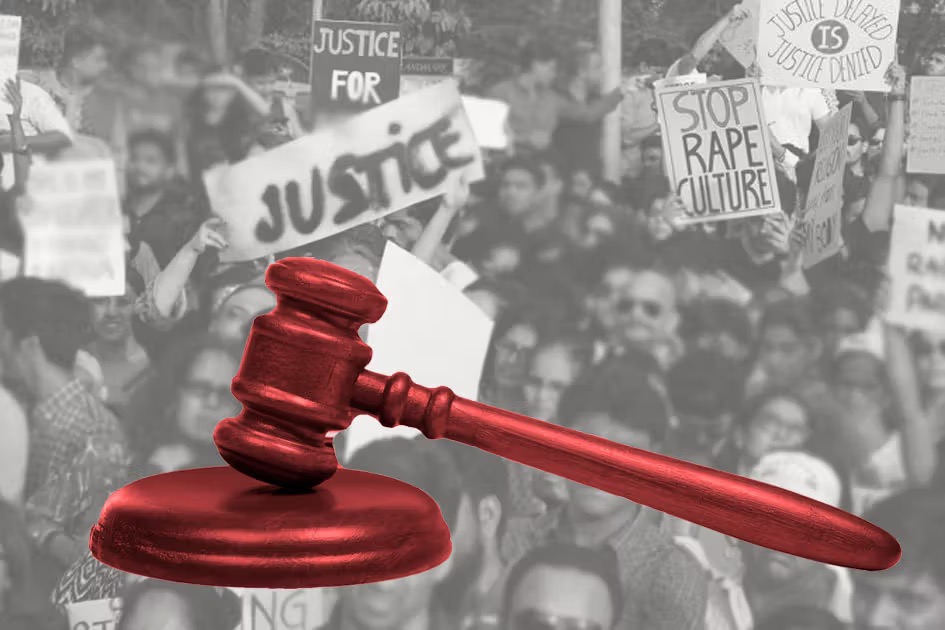Evolution of Rape Laws in India

19
SeptemberEvolution of Rape Laws in India
Rape laws in India have undergone a long and painful journey of evolution, shaped by horrific crimes that forced both lawmakers and society to confront uncomfortable truths. Despite multiple amendments, the gap between the law on paper and safety on the ground remains wide. To understand how Indian rape laws evolved, it is important to trace them through landmark cases that shook the nation’s conscience.
The Original Section 375 (1860)
When Lord Macaulay drafted the Indian Penal Code (IPC) in 1860, Section 375 defined rape in very limited terms. It recognized rape only as penile-vaginal penetration under six circumstances such as lack of consent, fear of death or hurt, intoxication, mistaken identity of husband, and if the victim was under 16 years of age. The definition was ambiguous and left out other forms of sexual assault, leading to low conviction rates.
Mathura Rape Case (1972, decided in 1979) – Tuka Ram and Anr. v. State of Maharashtra
A tribal girl named Mathura was raped by policemen in custody. While the Bombay High Court convicted the accused, the Supreme Court shockingly overturned it, reasoning that Mathura had shown “no resistance” and was “habituated to sex.”
The public outrage that followed marked a turning point. Feminist groups, students, and activists protested nationwide, demanding reforms. This ultimately led to the Criminal Law (Second Amendment) Act, 1983, which introduced major changes:
-
Section 114A, Indian Evidence Act: In cases of custodial rape, if the victim states she did not consent, courts must presume absence of consent.
-
Stricter punishment under Section 376 IPC: Custodial rape made punishable with a minimum of 7 years.
-
Section 228A IPC: Prohibited disclosure of the victim’s identity.
-
Section 327(2) CrPC: Mandated in-camera trials for rape cases.
Nirbhaya Case (2012, decided in 2013) – Mukesh & Anr. v. State for NCT of Delhi
The brutal gang rape and murder of a 23-year-old paramedic in Delhi shocked India and the world. The case triggered nationwide protests and demands for stronger laws.
This culminated in the Criminal Law (Amendment) Act, 2013, also known as the Anti-Rape Bill, which brought sweeping reforms:
-
Expanded the definition of rape beyond penile-vaginal intercourse to include oral sex, insertion of objects, and manipulation of the body.
-
Consent redefined as “unequivocal voluntary agreement.” Lack of resistance no longer implied consent.
-
Age of consent raised from 16 to 18 years.
-
New offences introduced:
-
Sexual harassment (Sec 354A)
-
Assault with intent to disrobe (Sec 354B)
-
Voyeurism (Sec 354C)
-
Stalking (Sec 354D)
-
-
Procedural safeguards: FIR in rape cases must be recorded by a woman officer; for disabled victims, FIR can be recorded at home in presence of an interpreter.
-
Section 53A, Indian Evidence Act: Past sexual history of the victim irrelevant in determining consent.
Though a step forward, the amendment ignored several crucial Justice Verma Committee recommendations, including criminalization of marital rape.
Kathua Rape Case (2018) – State of Jammu & Kashmir v. Deepak Khajuria
An eight-year-old girl was kidnapped, drugged, raped, and murdered in Kathua, Jammu & Kashmir. The barbarity of the crime once again sparked nationwide outrage.
Unnao Rape Case (2017-2018) – CBI v. Kuldeep Singh Sengar
In Unnao, Uttar Pradesh, a sitting MLA was found guilty of raping a minor girl. The case revealed deep flaws in how political power influences police investigations and justice delivery.
Reforms Triggered: The Criminal Law (Amendment) Act, 2018
The Kathua and Unnao cases led to another wave of reforms under the Criminal Law (Amendment) Act, 2018, which aimed to protect minors and ensure quicker justice:
-
Section 376AB IPC: Rape of a girl below 12 years punishable with minimum 20 years, life imprisonment, or death penalty.
-
Investigation in rape cases of minors reduced from 3 months to 2 months.
-
Anticipatory bail barred for rape of girls below 16 years.
-
Amendments to Evidence Act (Sections 53A & 146) to apply in cases involving minors.
Persistent Shortcomings in Rape Laws
Despite progressive amendments, glaring issues remain:
-
Marital rape is still not recognized as a crime under Section 375 IPC.
-
Rape laws remain gender-specific “woman” as victim, “man” as perpetrator, ignoring male and transgender victims.
-
Conflict between IPC and POCSO Act, 2012 creates disparities in punishment for minor boys and girls.
-
Conviction rates remain low (27.2% in 2018), and over 2.4 lakh rape/POCSO cases are pending in courts.
Conclusion – Beyond Legal Amendments
From Mathura (1972) to Nirbhaya (2012) to Kathua and Unnao (2018), every landmark case has forced incremental legal reforms. Yet, as statistics show, tougher laws alone are not enough.
A multidimensional approach is essential, strengthening fast-track courts, training police for sensitivity, making education on gender and sexuality mandatory, and most importantly, reforming social attitudes.
As Justice Bhagwati once said, “Law cannot stand still; it must change with the changing social concepts and values.”The evolution of rape laws in India is proof of this truth, but the journey is far from complete.


